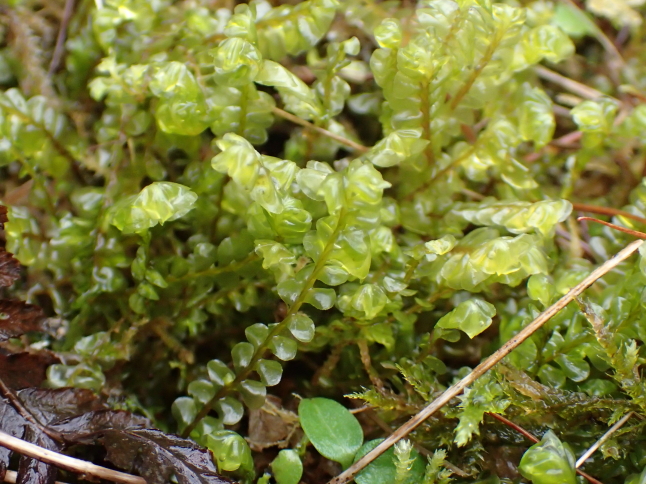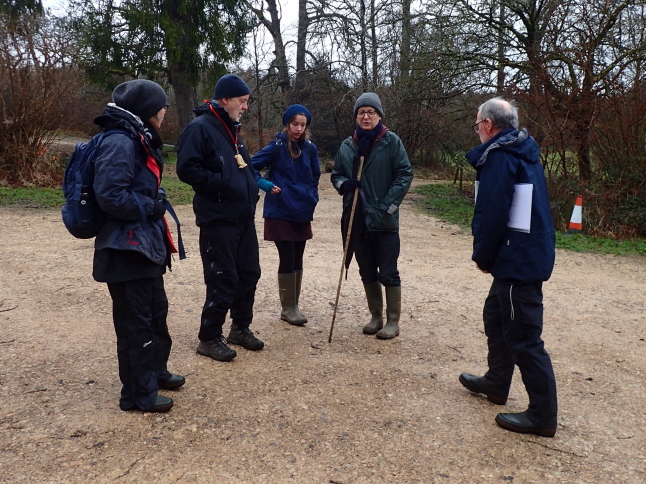The phrase good weather for ducks could be adapted to good weather for mosses, especially as to
proliferate they need water so their antherozoids can swim, sperm like, to meet up with the ovule and
consummate their arrival by producing the diploid sporophyte phase of their lives and their next
generation.
An so it was on Thursday when a small group of GNS members were lead round Chedworth woods close
to the Roman villa by Pete Martin. Pete is joint organiser for the Gloucestershire branch of the British
Bryological Association but more to the point he is passionate about mosses and liverworts, and why
not? And has an amazing in depth knowledge so not only can he identify most of them he can also tell
you something about their life style, habitat preferences and all sorts of other interesting facts. Did you
know that the leafy liverwort Lophocolea smells strongly of camphor, moth balls?
The group was blessed by a short break in the rain we started off just after 10.00am as the rain abated
and progressed up a steep ish path skirting the edge of the Roman villa site, the path was running with
water and was more or less a stream. The mosses were observed using hand lenses and some were
rendered difficult to ID due to being saturated with rain water, great for the antherozoids on their way
to potential married bliss but difficult for Bryologists to make out the finer details of moss leaf
morphology.
The Bryophytes were subdivided into 4 broad groups, Mosses growing upright, mosses that are more
horizontal and feathery, Liverworts that are leafy and Liverworts that are thallose. Not perhaps 100%
scientific but easier to understand. We found representatives of all 4 groups with the feathery mosses
predominating.
Lunch was taken at around 1.30pm and the first drops of rain were then felt. This was in the vicinity of
an old railway line and tunnel, This, we then followed back to the car park stopping at times to observe
various species that were here growing on the limestone rocks that were exposed from the cutting of
the old rail line.
A lot of species were identified, too many to list here but the illustrated ones are in order of appearance.
Zygodon viridissimus
Plagiochila asplenoides
Plagiomnium undulatum
Homalothecium sericeum
Dicranum scoparium
Pellia endiviifolia
Radula complanate
Hylocomiadelphus triquetrus











